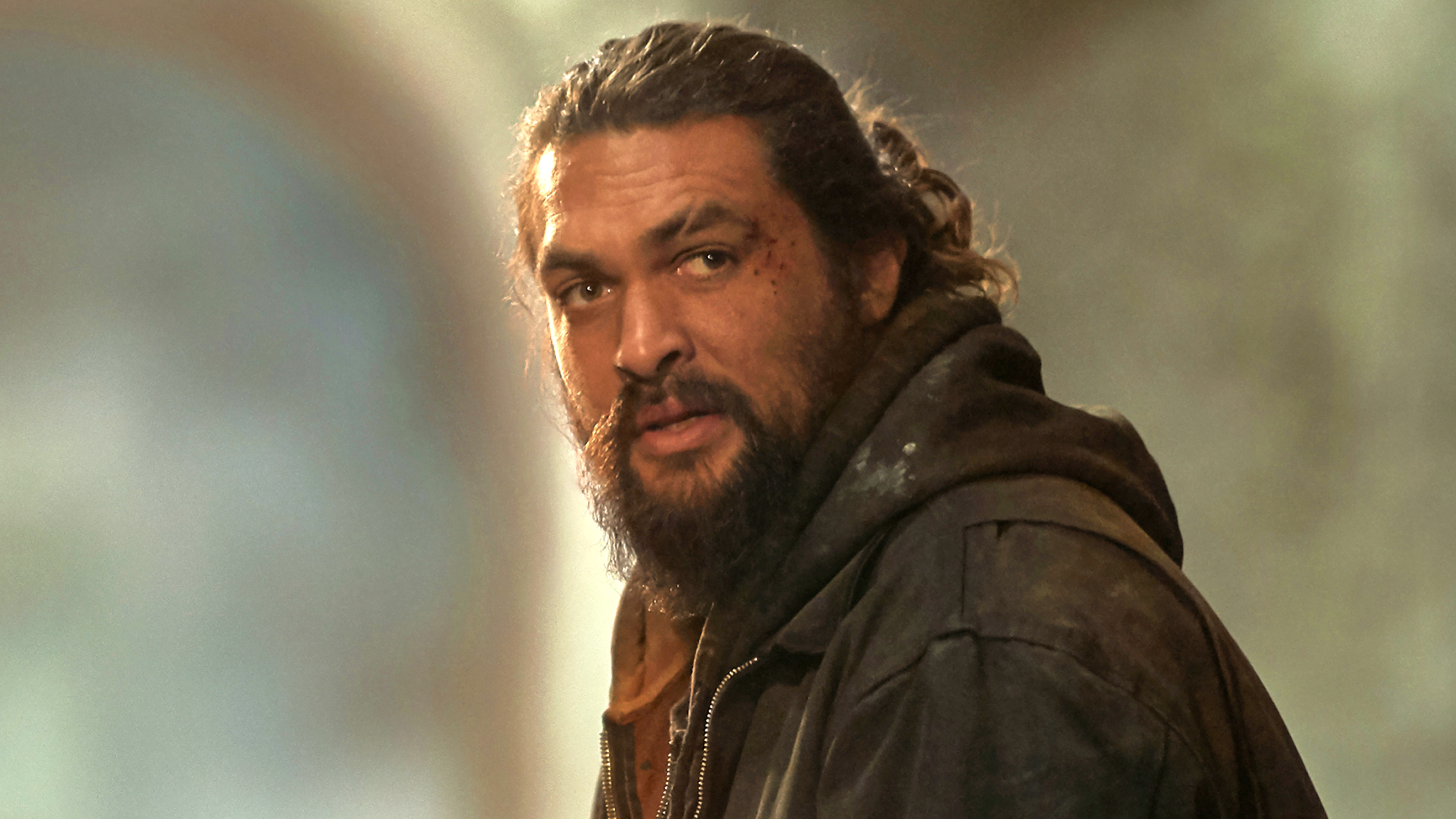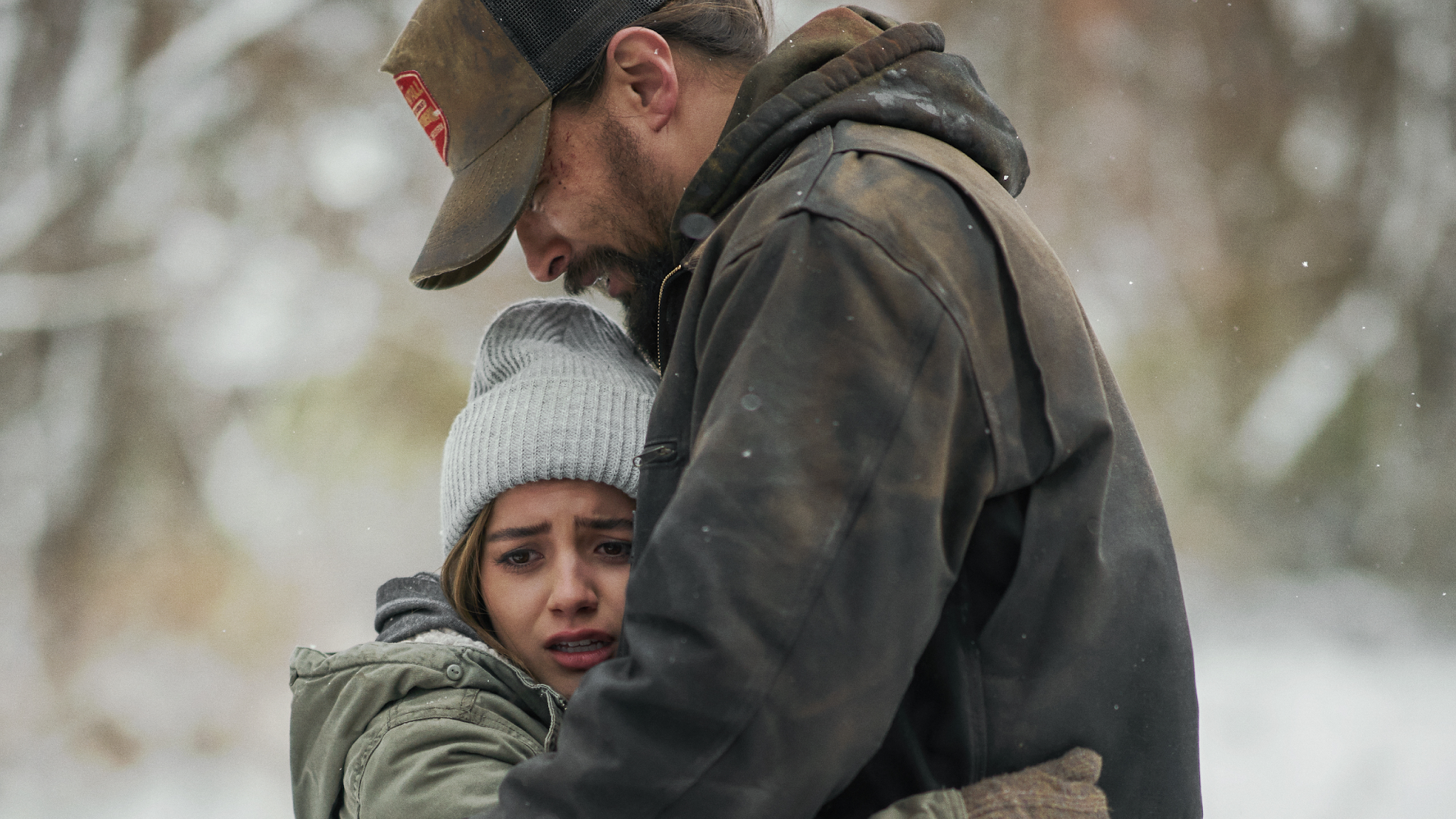 |
| Clay Enos / Netflix |
Beware: Spoilers for the twist ending of “Sweet Girl” get discussed beyond this point.
First, let us get into some context. After the first action sequence in Jason Momoa’s latest, the momentum turns from hope to worry. From the opening scene of Netflix’s “Sweet Girl,” it is clear that the audience is not dealing with a premise that contains a lot of room for a happy ending. The film features a grim and gritty beginning that feels like a suicide mission from the outset.
Jason Momoa’s Ray is a husband and father dealt an enormously horrifying blow. His wife’s cancer returns and a drug she needs to survive gets delayed due to a pharmaceutical company’s greed. Upon learning this, Ray makes the mistake of publicly threatening the company’s CEO, Simon Keeley (Justin Bartha) when he phones into a TV show Keeley is appearing in. Before long, “Sweet Girl” demonstrates the fallout.
Ray is a widower and a single father to his teenage daughter, Rachel/Rae (Isabela Merced). The duo agrees in wanting revenge, although Rachel is reticent for her father to carry any out. However, a surprising encounter when Ray attempts to learn more about a potential conspiracy with the big pharma ends unexpectedly. Here, “Sweet Girl” pivots before another sequence casts the die for the father/daughter duo.
The Twist Ending
In his first fight in “Sweet Girl,” Jason Momoa’s Ray gets into a fight with the assassin, Amos Santos (Manuel Garcia-Rulfo), on a train. Santos has just executed a reporter sharing information with Ray about bribes the pharmaceutical company had been paying. The problem is that Rachel has followed Ray to the train, distracting him.
Santos stabs Ray, leaving him on the train landing with a stricken Rachel, drifting in and out of consciousness. “Sweet Girl” then flashes two years into the future with Rachel and Ray alive and seemingly well, only Ray is not. Towards the ending of “Sweet Girl,” it catches up with the beginning sequence as FBI agent Sarah Meeker (Lex Scott Davis) begs Ray not to jump into the river from the top of the stadium stands.
The thing is that “Ray” is not Ray. He is Rachel. I know it is confusing. Stay with me a moment because “Sweet Girl” reveals that Ray died that day on the train platform. In actuality, Rachel kept Ray alive in her mind. So, she imagined her dad and not her was the one has been doing all of the fighting through the first, second, and third acts.
In simple terms, “Sweet Girl” reveals Ray has not fought the entire time nor has he killed Simon Keeley or any of the assassins. It has been Rachel. Thus, explaining why it took the imposing Ray so long to finish off his opponents during the film. Because of that and so much more, this twist personally saves “Sweet Girl.”
 |
| Clay Enos / Netflix |
How The Ending Redeems The Movie
Up until the ending, “Sweet Girl” does not do much in terms of breaking the pattern set by other action flicks. The movie utilizes a real-life problem as the basis for its revenge origin story, which is commendable. Exorbitant drug costs and the ruthless means big pharma has gone to assure a profit are real issues in the United States that deserve a film’s spotlight.
That said, “Sweet Girl” oscillates as a cautionary tale that chastises anyone fighting the issue to one commending those who stand up to the corruption. Rachel chides her “father”/herself for the actions he/they end up taking, and they end up in harm’s way for their efforts. (Ray pays with his life early on.) To its credit, the danger is realized.
On that note, I had in my head no one (including Ray) could survive the leap into the river that Ray is shown taking at the start of the movie. Of course, Ray should not have survived that or the stab wound earlier in the film either, so “Sweet Girl” injects some realism into the genre by having the initial hero perish on his quest. However, Rachel later survives the leap.
 |
| Clay Enos / Netflix |
What This Means For Jason Momoa
This is arguably Jason Momoa’s best action role to date. It gives him a chance to flex his acting muscle in a new way. Unfortunately, as in “Braven,” – Momoa is not allowed to play an unstoppable on-screen force. As in the film just mentioned, Momoa meets some tough competition in “Sweet Girl” that gives him a run for his money when his opponents should be winded. Thankfully, we know why at the end of the film.
Hence, redeeming the rather annoying trait, many action films have exhibited with male leads. Frustratingly, the hero usually has to get beaten within an inch of his life before triumphing. Sadly, the ensuing “John Wick” sequels fell into this rather unfortunate rut. Jason Momoa is a towering 6’4 on-screen presence, and yet both “Sweet Girl” and “Braven” show opponents who foil him. Why?
I am ready for a movie Jason Momoa that does not show the hero take a beating so easily. This style, arguably popularized by Jean-Claude Van Damme, is not stylistically pleasing, personally speaking. It undermines viewers’ ability to get lost in the action. Confidence in the hero gets diminished, and it costs the movie momentum.
 |
| Clay Enos / Netflix |
Final Thoughts On The Ending
The ending opens the door to the potential of a “Sweet Girl” sequel. Rachel somehow manages to kill Santos. (I suppose the audience is supposed to chalk this up to a “Dirty John” style situation.) From there, she confronts Santos’ boss -- Diana Morgan. Yes, the politician is a double-talking corrupt traitor.
Rachel gets her to confess to taking bribes, records it, and lets her live, sending the recording to the FBI, who arrest Morgan. Rachel is able to flee the country via airplane despite the absence of any known fake ID or passport. It is all a bit too fantastical to believe but “Sweet Girl” is in many ways an action fantasy, so I forgive it. All told, I could go for a sequel.
How a “Sweet Girl 2” would manage with the twist ending out in the open, and Jason Momoa’s Ray not fighting, is anyone’s guess. Momoa was the hook that got me interested in watching the first (and to date only) “Sweet Girl.” The movie did make a strong case for Isabela Merced, and I would watch her entirely take lead, so it might work. After all, Diana Morgan could easily walk.
On a somewhat related note, why can’t Hollywood give Jason Momoa his unstoppable moment? He is due a part akin to what “Daredevil” did so well when it introduced The Punisher. Frank Castle tore through enemies without mercy. You could believe it because you saw it. While Castle’s solo series leaned towards JCVD more than his origin story, he still suffered nothing nearly as harrowing as Jason Momoa in either of the films I mentioned.
While I went into “Sweet Girl,” hoping it would be Momoa’s time to shine, it turns out to be Isabela Merced’s star that shines brightest. Merced shows some major movie muscle off in “Sweet Girl,” and as the title suggests, it is her movie. So, while I continue to wait for Jason Momoa to have his stand-alone action moments, “Sweet Girl” is still a Netflix treat.

Comments
Post a Comment